Get complex ideas, beautifully explained and delivered to your inbox during a season.
A few times a year, we'll deliver a season of incredible bespoke interactive experiences that will inform, engage, and delight. It may be an RPG about climate change, a story about self-immolation with musical accompaniment, or a visual compliment to a popular podcast, but one thing's for sure – it will be awesome.
Get Started for FREE
Sign up with Facebook Sign up with X
I don't have a Facebook or a X account

 Your new post is loading... Your new post is loading...
 Your new post is loading... Your new post is loading...
Today, if you’re not telling a story that captivates your audience, you simply won’t be heard.
Video storytelling is most effective when the story being told is relevant to the brand, entices viewers to change their behavior, and motivates them to buy a product or service. Hitting this trifecta is no easy task, but with the right strategy, video can ultimately become your most powerful marketing medium.
Who ever thought a soap company could create a campaign that revolutionized the way women — and, really, the entire world — defined “beauty”? When done right, one short digital clip can go viral and motivate viewers across the globe to change their outlooks and behavior.
Let Your Story Do the TalkingEvery brand story must include three key ingredients:...
Jeff Domansky's insight:
Find out the three key ingredients of a successful brand story.
You stare out of the window for inspiration. You reread your post. Nothing comes to mind.
Sigh.
What more is there to say?
You don’t want your post to fizzle out with a few drab sentences. A bland paragraph at the end could wreck your whole blog post.
But how can you come up with something truly inspirational?...
Jeff Domansky's insight:
You don’t want your post to fizzle out with a few drab sentences. But how can you come up with something truly inspirational?
Have you ever gotten a sense of déjà vu while reading a book or watching a movie that’s otherwise totally new to you? Obviously you have— so many stories are built on the same foundations of archetypes and tropes. Stripped of complexities, all stories are basically the same: an individual ventures into the unknown to acquire something they desire. Via David Hain, Jeff Domansky
Jeff Domansky's insight:
David Hahn shares a valuable storytelling model for every storyteller, blogger, presenter and marketer. 
Jeff Domansky's curator insight,
October 6, 2016 10:51 AM
David Hahn shares a valuable storytelling model for every storyteller, blogger and marketer. 
Sylvie Bellard-Hilaire's curator insight,
October 7, 2016 3:22 AM
Storytelling, comment fabriquer son histoire étape par étape
Create truly responsive stories, white-papers, blog posts, or reports with our unique format that automatically takes advantage of every device size. With full screen video and imagery, interactivity, and lots of great layouts and designs to choose from, you can replace those static PDFs and boring blog posts.
Jeff Domansky's insight:
Storyform is changing reading forever. Transform your stories, white-papers, blog posts, or PDF reports into a beautiful, responsive, interactive magazine-like experience. Thanks to Robin Good for suggesting it. Highly recommended. 10/10
Researchers Rob Walker and Joshua Glenn created SignificantObjects.com as a way to show the value of storytelling. They acquired several random inexpensive knick-knacks from eBay actions — averaging $1.50 per purchase. They had writers create heartfelt stories about these tchotchkes: items such as a butter dish, a porcelain miniature and a mini jar of mayonnaise. Altogether, the $128.74 investment yielded $3,612.51 when re-sold with the stories. By adding an intriguing story, a simple Missouri shot glass purchased for $1 sold for $76. Here’s part of the tale: “See that freaky little bird? That’s the state bird, my friend. The Missouri Hunt-and-Pecker. Never heard of ’em? Well, then I guess you’ve never been to Missouri, have you? Maybe passed through, didn’t get out of the car. Or changed planes in the airport, or went up in the Arch once, just to say you’d done it. But that’s not Missouri to me. St. Louis is the gateway, sure, but you want to know Missouri you need to drive a few hours into the corn, you want to visit St. Joseph, up through Maryville — skirt the Iowa border, though Iowa’s a sore point from where I sit. You need to get lost in Missouri or you never really were there in the first place. Even then you won’t be likely to meet the Hunt-and-Pecker unless you circulate a manuscript or two.” Having an effective storytelling strategy may not always generate quick conversions, but it can illustrate why a consumer should invest in your product instead of a competitor’s. In this case, storytelling added massive return on objects originally valued at a pittance....
Jeff Domansky's insight:
We’ve reached an enlightened age in content marketing. You’ve likely heard this statement repeated ad nauseum: “Content is king.” But can content and storytelling convert. Yes, sometimes.
The results make for interesting reading. Reagan and co say that their techniques all point to the existence of six basic emotional arcs that form the building blocks of more complex stories. They are also able to identify the stories that are the best examples of each arc. The six basic emotional arcs are these:A steady, ongoing rise in emotional valence, as in a rags-to-riches story such as Alice’s Adventures Underground by Lewis Carroll. A steady ongoing fall in emotional valence, as in a tragedy such as Romeo and Juliet. A fall then a rise, such as the man-in-a-hole story, discussed by Vonnegut. A rise then a fall, such as the Greek myth of Icarus. Rise-fall-rise, such as Cinderella. Fall-rise-fall, such as Oedipus. Finally, the team looks at the correlation between the emotional arc and the number of story downloads to see which types of arc are most popular. It turns out the most popular are stories that follow the Icarus and Oedipus arcs and stories that follow more complex arcs that use the basic building blocks in sequence. In particular, the team says the most popular are stories involving two sequential man-in-hole arcs and a Cinderella arc followed by a tragedy....
Jeff Domansky's insight:
Scientists at the Computational Story Laboratory have analyzed novels to identify the building blocks of all stories.
It’s in vogue for marketers to think of themselves as storytellers. But much of the marketing that gets passed off as “storytelling” really isn’t that much of a story. There is genuine power in stories and there are inspiring examples of brands that tell stories. But I think that often gets diluted by all of the content produced in the name of storytelling that is really just a thinly veiled marketing pitch. Not all marketing is storytelling. Not all content tells a story. Most case studies are just case studies. Most video testimonials are just video testimonials. Most long-form blog posts are just long-form blog posts. I enjoyed this 2-minute critique from Stefan Sagmeister about storytelling (from an interview ironically made while speaking at a marketing conference on storytelling).As he summarized, “Storytelling has taken on the mantle of bullshit.”...
Jeff Domansky's insight:
Taking the sales BS out of marketing storytelling and keeping the stories is vital according to my favorite Marketoonist Tom Fishburne.
I am super passionate about what I do in the world of telling business and marketing stories. If you read my stuff and know me, you know I am a storytelling nerd from both the business and improv stages—and proudly!
Jeff Domansky's insight:
Useful tips on business storytelling from Kathy Klotz-Guest.
That’s right. The basis of visual storytelling can come from words. I call these “word visuals.” They’re perfect for PR folks who can struggle with bringing a visual dimension to communications. Words as a design technique play to our strength. These “word visuals” come in four flavors: - Clever words that stand on their own: The words, sometimes in hand-written form, completely carry the day. Little or no design goes into this type of visual storytelling. - Speech cloud from a celebrity: I get a lot of mileage from this technique which is particularly effective for B2B companies where you don’t expect a Conan O’Brien to surface. - Replace the words in an existing visual: Take something that already exists and replace the words with your own. The words carry a simple image: The Game of Thrones image with our friend Tyrion that kicks off this post offers an example of this approach. The words on top of elementary design give hope of a chuckle....
Jeff Domansky's insight:
Lou Hoffman shows how word visuals bring a new dimension to your communications strategy.
For most of us, we can absorb this continual stream of antisocial programming and not be affected by it. We still know what's right and wrong. But in a world where it’s the “black swan” outliers that grab the news headlines, we have to think about the consequences that reach beyond the mainstream. When we abandon the moral purpose of stories and focus just on their entertainment aspect, are we also abandoning a commonly understood value landscape? If you’re looking for absolute answers, you won’t find them here. That’s just not the world we live in. And am I naïve when I say the stories we chose to tell may have an influence on isolated violent events like what happened in Orlando? Perhaps. Despite all our best intentions, Omar Mateen might still have gone horribly offside. But all things and all people are, to some extent, products of their environment. And because we in media and advertising are storytellers, we set that cultural environment. That’s our job. Because of this, I believe we have a moral obligation. We have to start paying more attention to the stories we tell....
Jeff Domansky's insight:
Thoughtful post by Gord Hotchkiss about media, storytelling and moral responsibility.
But when it comes to content marketing, there’s a component that doesn’t always seem logical: storytelling.
Jeff Domansky's insight:
It was a dark and stormy night and Neil Patel offered useful business storytelling tips.
From beginning to end, a transmedia story should be a social phenomenon, one which draws people together and unifies them through shared experiences. At present, the industry is obsessed with creating toys and applications which are too exclusive. They do not address the primary goal of storytelling—bringing individuals together by revealing some truth about the world around us.
Jeff Domansky's insight:
If you're writing for a cross platform market, Nuno Bernardo has several valuable tips for you. |
Anyone who’s taken a shortcut and skipped the primer while painting a room knows the kind of results you can get. Uneven. Unpolished. The primer sets the stage for a beautiful wall.
Jeff Domansky's insight:
Refreshing approach to storytelling and journalism.
One of the most common challenges I hear from business leaders and marketers is this: “We have a hard time telling our story”. They have a desire to tell people who they are and why they’re important and yet they stumble when trying to explain this in a way that’s interesting or engaging.
In essence, they have no idea how to tell their story — they are not interesting, so people are not interested. So, what’s the secret? How do you tell your story so people actually care? Here are 5 ways to start telling stories that people actually care about:...
Jeff Domansky's insight:
Tell the "Why?" and you'll fly.
“You will live 7.5 minutes longer than you would have otherwise, just because you watched this talk.
”This was the claim that video game designer Jane McGonigal presented to the crowd during her June 2012 TED talk. As the camera panned over the members of the audience, their faces showed universal skepticism: Was this lady serious?
There was something else interesting about that crowd. Despite their doubtful visages, everyone in the audience was drawn in by McGonigal’s words. No one was checking their email, talking to their neighbor or looking at the camera circling in front of them; all eyes were fixated on the (potentially crazy) speaker.
Great hooks, like McGonigal’s provocative opening statement, get audiences on the edge of their seats and give them a sense of what’s coming. They allow you to win a crowd’s attention right away and give you a legitimate chance to have a lasting impact....
Jeff Domansky's insight:
Great openings create great expectations.
Corporate communications teams around the world are working hard at the moment to build and present a “corporate narrative” to the world. There are two factors that are the main cause of all this interest and investment. First, companies have become a lot more complex in recent years as they globalize and update their organizational structures; this makes it harder to communicate a single, clear company story. Second, the amount of information available to people, and the ease with which people can tap into niche sources of information based on their interests – personal or professional – make it increasingly difficult to cut through the noise and engage people with a company story. Two Trends But without a cohesive company story, communicators — and their CEOs — fear that messages about the company’s identity and direction will be inconsistent, making the company appear disorganized, or even disingenuous. Early findings from a CEB survey on the topic show two interesting findings about the way firms build a corporate narrative....
Jeff Domansky's insight:
Many companies are updating and refining the unified story they tell the world. Here's how they're doing it.
When you combine the timeless necessity of storytelling with the sheer power of visual content, you arrive at one of the most potent forces shaping the future of communication today: Visual storytelling.
Jeff Domansky's insight:
Jeff Bullas shares six visual storytelling trends to note. 
Barbara Ganley's curator insight,
September 21, 2016 7:48 AM
Though VT nonprofits won't likely be walking down the VR road anytime soon, it's important to see what's out there & what's possible.
You’re doing a presentation, so you should start with the facts you want to get across right? Wrong! A good public speaker takes their audience on a journey, leaving them feeling inspired, motivated and completely on board with your message. But structuring your speech to get your ideas across and keep your audience engaged all the way through to the end can be tricky. Experienced public speakers tell stories to get their point across. They do this because humans are hardwired for stories. They love heroes, journeys, suspense, surprises, layers and happy endings. Why Is Storytelling Important? Before we talk about the basic building blocks of a story, let’s take a step back and briefly talk about why storytelling is so powerful. Humans have an instinctive predilection for stories. Think about it, Gurg the caveman hunts the big wooly mammoth and he returns to tell his story by painting pictures on the cave walls. Today, Claire, comes back from a big night out at the bars and shares her story by posting gossip and photos on her Facebook wall. We all tell stories. We tell stories of romantic love. We tell stories about the challenges we face. We tell stories that explain how we got that distinctive scar on our knee. If you’re trying to inform, persuade, motivate, or entertain, you need to incorporate stories. That means every time you speak, you should think about how to enhance your message with stories....
Jeff Domansky's insight:
Storytelling makes for way better presentations.
For people who want to see an Internet at least partly liberated from the grip of rapacious, government-connected telecommunications giants, Guifi is one of the most hopeful developments to date. Its core values, ownership, and operations are testament to the idea that you and I, and our communities, can — and should — control how we communicate. For the tens of thousands of people using it, some at no charge, Guifi operates as well as Time Warner Cable does for New Yorkers (and maybe better). Guifi exists because a technically savvy local man, Ramon Roca, got tired of waiting for Telefonica, the Spanish telecom giant, to provide Internet access to the people of his community. He had a personal need for access. But he had a powerful second motive as well: “to help my neighbors.” Guifi started with a single wifi node in 2004. Today there are more than 30,000 working nodes, including some fiber connections, with thousands more in the planning stages.... .
Jeff Domansky's insight:
Spanish engineer Ramon Roca got tired of waiting for telecom companies to wire his town — so he did it himself. Great story by Dan Gillmor.
Really powerful marketing ideas are all born from simple psychological principles. Storytelling may be a popular buzzword now, but the truth is we’re wired to like stories. They help us better understand the world around us. Children learn social or moral rules through fables, we remember scientific concepts through analogies, and they help us relate to and empathize with others. When done right, storytelling engages your customer in the long-term, allowing them to relate to your brand’s personality and mission, and feel emotionally invested in your success. 80% of consumers want brands to tell their story but can’t remember a good example. So how do you do it right? There are no hard and fast rules but here are some ideas to help you tell your brand’s story through email....
Jeff Domansky's insight:
Practical tips for better business storyselling.
If your company hasn’t adopted a method of brand storytelling, you’re going something wrong. In the current digital landscape, you MUST adopt the method of brand storytelling in order to effectively market your product. Brand storytelling is all about creating an emotional connection to your brand (or product) and delivering your ideas to an audience more effectively.Here are five great brand storytelling examples....
Jeff Domansky's insight:
Five brand storytellers that do it right.

Akanksha Tripathi's curator insight,
June 20, 2016 8:48 AM
Really good content for those who are going to enter to the ad world. I hope it can help somebody. Great stuff!!
I’m a storyteller by trade. Story is everything. The stories we tell — and how we tell them — inform who we are and who we become. I’m invested in ethics and education, in individuals equipping themselves to navigate a market designed to fool them. More even than informed decision-making, I’m invested in fostering creativity and the courage to explore new art forms, to find new ways to build connections with each other. Virtual reality has so much raw power — and now more than ever, we need a reminder of what Uncle Ben told Peter. As somebody who’s found himself uniquely situated to discuss the intersection of writing, storytelling structure, and virtual reality, I want to share some of the basic ideas I’ve learned (from making content and building a creation tool in the medium) to empower a new crop of filmmakers and storytellers to take the leap toward producing their own narrative adventures in VR....
Jeff Domansky's insight:
Virtual Reality! It's amazing! It's terrifying! It's the future! Nothing will ever be the same!
Immersive storytelling is a technique that is finding its way into new spaces such as theatres, games, documentaries, advertising and journalism. The aim is to give people the feeling of really ‘being there’, calling on 3D gaming, virtual and augmented reality technologiesin the process. Tech is making our media more entertaining, hard-hitting and unique.
Jeff Domansky's insight:
Immersive is the next big thing in storytelling.
For the past week or so, I’ve been engaged in a running Facebook Messenger conversation with an impulsive, irresponsible twentysomething named Jessie. She uses all caps when excited; chats with me during job interviews and dates; consults me about her bad decisions; and sometimes even follows my advice. She is also, I should mention, a chatbot—an automated script being served to me by a computer program. But don’t judge me too harshly for spending time with her. Our conversation is also a game and a story, and Jessie is a narrative vehicle with whom, like a character in a novel, it is possible and even enjoyable to empathize. Last week, Facebook joined companies like Kik and Microsoft by inviting any company to build a chatbot for its Messenger platform. The typical hypothetical examples were transactional. An airline might build a bot that helps passengers book tickets. OpenTable might build one to take restaurant reservations. Uber could build one through which its users hail a ride. But if chatbots are, as we’ve been promised, the next evolution of apps, some of them will surely be games. It was the job of Rod Humble, the game developer who created Jessie, to figure out what that meant....
Jeff Domansky's insight:
Chatbots as entertainment are a surprisingly compelling new art form. |






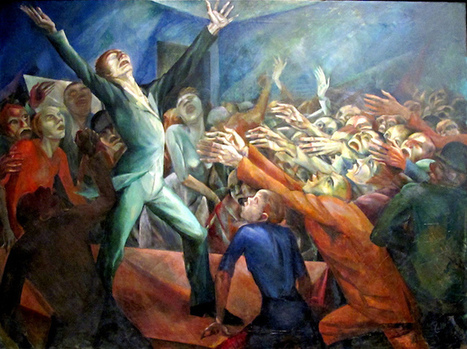




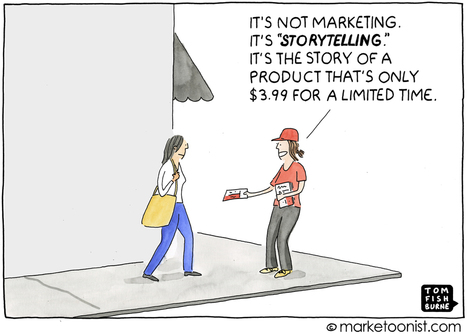
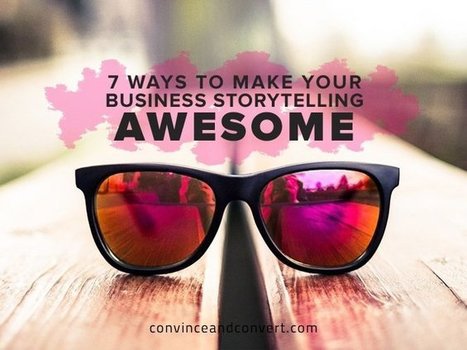
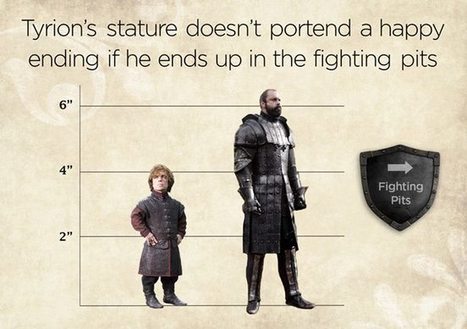




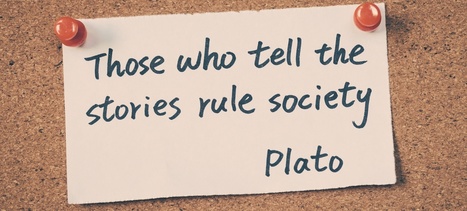




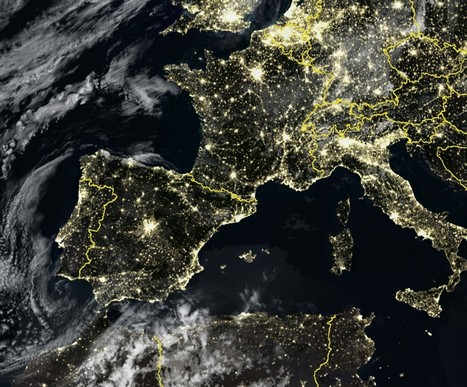










Primer Stories are stories like you haven't seen before - visual and compelling. Recommended reading and subscribing. 10/10